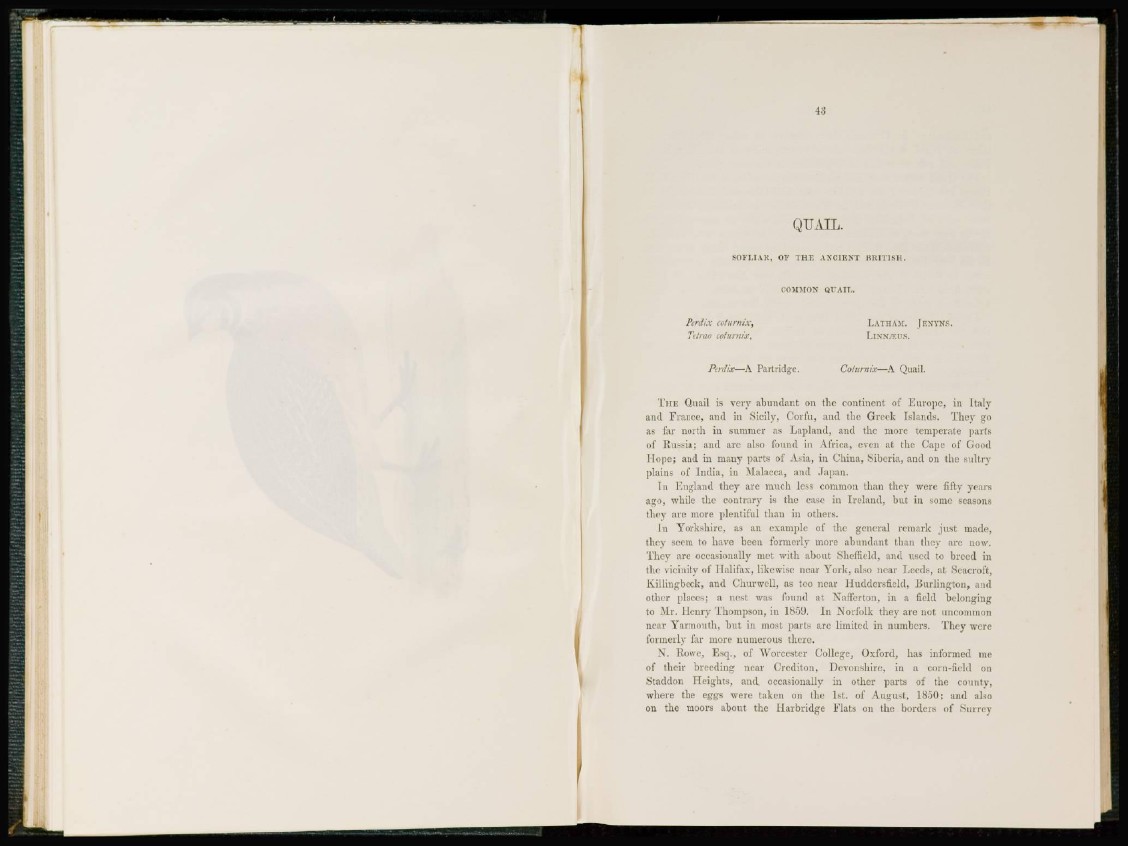
4:i
QUAIL.
SOFLIAR, OV THE ANCIENT BRITISH.
COMMON QFAIE.
Perdix cotunux, LATHAM. JENYNS.
Tetrao cotwnite. LINN^.U.S.
Perdix—A Partridge. Cotunu'x—A Quail.
THE Quail is very abundant on the continent, of Europe, in Italy
and France, and in Sicily, Corfu, and the Greek Islands. They go
as far north in summer as Lapland, and the more temperate parts
of Russia; and arc also found in Africa, even at the Cape of Good
Hope; and in many parts of Asia, in China, Siberia, and on the sultry
plains of India, in Malacca, and Japan.
I n England they are much less common than they "were fifty years
ago, while the contrary is the case in Ireland, but in some seasons
they arc more plentiful than in others.
In Yorkshire, as an example of the general remark just made,
they seem to have been formerly more abundant than they are now.
They are occasionally met with about Sheffield, and used to breed in
the vicinity of Halifax, likewise near York, also near Leeds, at Scacroft,
Killingbcck, and Churwell, as too near Huddersficld, Burlington, and
other places; a nest was found at Nafferton, in a field belonging
to Mr. H e n r y Thompson, in 1859. In Norfolk they are not uncommon
near Yarmouth, but in most parts are limited in numbers. They were
formerly far more numerous there.
N. Rowe, Esq., of Worcester College, Oxford, has informed me
of their breeding near Crediton, Devonshire, in a corn-field on
Staddon Heights, and occasionally in other parts of the county,
where the eggs were taken on the 1st. of August, 1850; a nd also
on the moors about the Harbridge Flats on the borders of Surrey